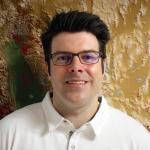Community Fault Model v5.3 Released with Updated Web Tools for Improved Access

We are pleased to announce the release of version 5.3 of the SCEC Community Fault Model (CFM5.3) — the most detailed and comprehensive three-dimensional representation of southern California faults to date. The CFM faults are defined based on a wide range of diverse and often complementary data including mapped surface traces, seismicity, seismic reflection profiles, well/borehole data, and geologic cross sections. CFM5.3 contains 440 individually named fault representations in the preferred model and includes a comprehensive set of alternative representations. For comparison, CFM1, which was released in 2003, had 133 fault representations. CFM5.3 includes numerous new and updated fault models including detailed 3D representations of the faults responsible for the 2019 M6.4 and M7.1 Ridgecrest earthquakes. This latest version adds several new features that make the SCEC CFM even more accessible to the earthquake community.
Map-Based Web Interface: In past years, the SCEC CFM was distributed as a collection of data files in a single archive, which required the user to load and search for desired objects manually after download. We have now developed an interactive CFM website that allows users to browse, explore, and query for preferred subsets of the CFM through a map-based interface. Users can search, view, and download the CFM faults by keyword(s), geographic extent (latitude and longitude ranges), and several other criteria.
3D Web Interface: Prior to CFM5.3, viewing the CFM in its native, 3D environment presented a major hurdle for users without access to specialized (and often expensive) software. The new map viewer now comes with a “Plot3D” function that loads an interactive 3D visualization of the selected faults. This allows users, with no specialized software required, to view, rotate, translate, and zoom in/out of the 3D complexity of southern California faults revealed in the SCEC CFM. The 3D plotting capabilities are designed to run efficiently through web browsers on laptops and other mobile devices.
 |
| The Los Angeles region as shown in the interactive CFM5.3 map viewer (left). In 2D, the Puente Hills and Lower Elysian Park faults appear to intersect, but 3D viewing using the Plot3D tool (right) shows that the faults do not intersect at depth. |
Metadata Improvements: To facilitate scientific research use, CFM5.3 includes significant improvements in the model metadata:
- All CFM fault objects now include references that indicate what each surface is based on.
- Where available, fault objects reference the USGS QFault ID numbers.
- Hierarchical object names now conform to a consistent naming convention. (This allows users to write code that can easily parse the fault names from the various model files.)
- Direct automated calculations of fault surface area and average strike/dip are now provided. (Average strike/dip calculations are weighted by element area, to represent a true average orientation of the fault surface regardless of mesh variations.)
- Fault trace data is now provided in several user-requested formats.
 |
| Map of the fault traces of CFM5.3. While the CFM5.3 is a fully 3D model, fault trace data are often requested, and are now provided in several commonly used formats (shapefile, Google Earth kml, and plain text Generic Mapping Tools multisegment format). Fault trace maps like this are available for download at the CFM website. |
CFM Community Evaluation: While the CFM is constructed based on data from numerous different sources, what makes the “Community” part of CFM is our periodic evaluations of the model. CFM5.3 will undergo an open and rigorous community evaluation in the fall of 2021. Results from this evaluation will provide key information towards the next release of the SCEC Community Fault Model. If you are interested in participating in the upcoming community evaluation or have questions about the model, please contact the SCEC CFM mailing list at scec-cfm-l@maillist.usc.edu for more information.
About the Authors
 |
Scott T. Marshall is a professor in the Department of Geological and Environmental Sciences at Appalachian State University. His research focuses on computational modeling of fault mechanics and satellite geodesy. He is currently co-leader of the Community Modeling Group (CXM) of the SCEC Science Planning Committee and is a developer of the SCEC Community Fault Model. |
 |
Andreas Plesch is a senior research scientist in the Department of Earth and Planetary Sciences at Harvard University. His research focuses on 3D model building and validation, regional synthesis of datasets, and seismic interpretation. He is currently a developer of the SCEC Community Fault Model. |
 |
John H. Shaw is the Harry C. Dudley Professor of Structural and Economic Geology in the Department of Earth and Planetary Sciences at Harvard University. His research focuses on the structure of the earth's crust, active faulting and folding, earthquake hazards assessment, petroleum exploration methods, and remote sensing. He is a Chair of the SCEC Board of Directors as well as a member of the SCEC Executive Committee. |
 |
Craig Nicholson is a Research Geophysicist in the Marine Science Institute at the University of California Santa Barbara. His research interests include seismotectonics, induced earthquakes, analysis of earthquake data to invert for crustal structure, material properties, and the mechanical behavior of faults, as well as 3D imaging and visualization of faults. He is a developer of the SCEC Community Fault Model |
 |
Mei-Hui Su is a senior programmer at SCEC with many years of professional experience working both in academia and industry. She is the lead software developer for SCEC’s community modeling activities. |
 |
Philip Maechling is the Associate Director for Information Technology for the SCEC where he develops and performs large-scale seismic hazard calculations using high-performance computing. He also develops and releases open-source seismological and engineering software used in ground motion modeling and simulations. He is a member of the SCEC Executive Committee and the Science Planning Committee. |
 |
Tran Huynh is the SCEC Associate Director for Science Operations, working to promote research collaborations across organizations and to align short-term science priorities and business strategies with SCEC’s long-term goals. With the help of her team, she manages the development of SCEC’s collaborative tools and web presence, and allocation of resources for researchers to participate in the SCEC collaboration. |
 |
Edric Pauk is a software engineer and web developer at SCEC. He is the lead developer for the technical infrastructure of the SCEC Community Information Systems that supports the annual SCEC Science and Collaboration Plan processes, including proposal submissions and reviews, subawards, project reporting, publications, workshops, and annual meeting registration. |
Acknowledgements
This research was supported by the Southern California Earthquake Center (Award No. 21018). SCEC is funded by NSF Cooperative Agreement EAR-1600087 and USGS Cooperative Agreement G17AC00047. We thank the numerous contributors to the SCEC CFM over the years.
References
- CFM5.3 homepage with links to the interactive viewer and CFM5.3 archive - https://www.scec.org/research/cfm;
- Plesch, A., et al. (2007). "Community Fault Model (CFM) for Southern California." Bulletin of the Seismological Society of America 97: 1793-1802. SCEC Contribution 1134
- Plesch, A., Marshall, S. T., Nicholson, C., Shaw, J. H., Maechling, P. J., & Su, M. (2020, 08). The Community Fault Model version 5.3 and new web-based tools. Poster Presentation at 2020 SCEC Annual Meeting. SCEC Contribution 10547



